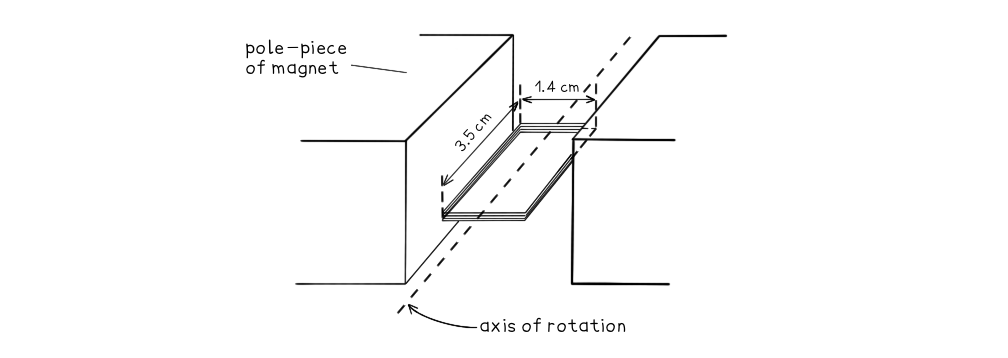- 翰林提供学术活动、国际课程、科研项目一站式留学背景提升服务!
- 400 888 0080
Edexcel A Level Physics:复习笔记7.20 Faraday's Law
Faraday's Law
- Faraday's Law connects the rate of change of flux linkage with induced e.m.f
- It is defined in words as:
The magnitude of the induced e.m.f is directly proportional to the rate of change of magnetic flux linkage
- Faraday's Law as an equation is defined as:

-
- Where:
- ε = induced e.m.f (V)
- Δ(Nɸ) = change in flux linkage (Wb turns)
- Δt = time interval (s)
- If the interval of time becomes very small (i.e., in the limit of Δt → 0) the equation for Faraday's Law can be written as:
- If the interval of time becomes very small (i.e., in the limit of Δt → 0) the equation for Faraday's Law can be written as:

Combining Lenz's Law and Faraday's Law
- Combining Lenz's Law into the equation for Faraday's Law is written as:

- The negative sign represents Lenz's Law
- This is because it shows the induced e.m.f ε is set up in an 'opposite direction' to oppose the changing flux linkage
- This equation also shows that the gradient of the graph of magnetic flux (linkage) against time,
 represents the magnitude of the induced e.m.f
represents the magnitude of the induced e.m.f
- Note: the negative sign means if the gradient is positive, the induced e.m.f is negative
- This is again due to Lenz's Law, which says the e.m.f is set up to oppose the effects of the changing flux linkage
Worked Example
A small rectangular coil contains 350 turns of wire. The longer sides are 3.5 cm and the shorter sides are 1.4 cm. The coil is held between the poles of a large magnet so that it can rotate about an axis through its centre. The magnet produces a uniform magnetic field of flux density 80 mT between its poles. The coil is positioned horizontally and then turned through an angle of 90° in a time of 0.18 s.
The coil is held between the poles of a large magnet so that it can rotate about an axis through its centre. The magnet produces a uniform magnetic field of flux density 80 mT between its poles. The coil is positioned horizontally and then turned through an angle of 90° in a time of 0.18 s.
Calculate the magnitude of the average e.m.f induced in the coil.
Step 1: Write down the known quantities
-
- Magnetic flux density, B = 80 mT = 80 × 10-3 T
- Area, A = 3.5 × 1.4 = (3.5 × 10-2) × (1.4 × 10-2) = 4.9 × 10-4 m2
- Number of turns, N = 350
- Time interval, Δt = 0.18 s
Step 2: Write out the equation for Faraday’s law:

Step 3: Write out the equation for the change in flux linkage:
-
- The number of turns N and the coil area A stay constant
- The flux through the coil changes as it rotates
- Therefore, the change in flux linkage can be written as:
Δ(NΦ) = NA(ΔB)
Step 4: Determine the change in magnetic flux linkage
-
- The initial flux through the coil is zero (flux lines are parallel to the coil face)
- The final flux through the coil is 80 mT (flux lines are perpendicular to the coil face)
- This is because the coil begins horizontally in the field and is rotated 90°
- Therefore, the change in flux linkage is:
Δ(NΦ) = NA(ΔB) = 350 × (4.9 × 10-4) × (80 × 10-3) = 0.014 Wb turns
Step 5: Substitute change in flux linkage and time into Faraday’s law equation:
 = 0.076 V
= 0.076 V
Exam Tip
The 'magnitude' of the e.m.f just means its size, rather than its direction. This is often what is required in exam questions, so the minus sign in Lenz's law is not necessarily required in calculations. However, you may be expected to explain the significance of the negative sign in the equation, so be prepared to interpret it as an expression of Lenz's Law!
Remember that 'd' and the greek letter delta, 'Δ', simply mean 'change in'.
转载自savemyexams

早鸟钜惠!翰林2025暑期班课上线

最新发布
© 2025. All Rights Reserved. 沪ICP备2023009024号-1








